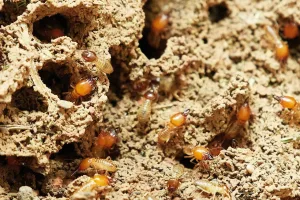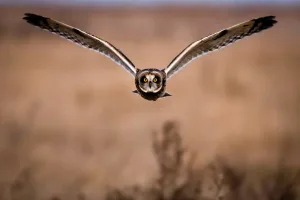22 Fun Facts About Pandas | Unleashing the Cuteness
-
Pandas can eat up to 28 pounds of bamboo daily.
-
Their sense of smell helps locate mates from miles away.
-
Cubs start crawling at around three months old.
-
Pandas sometimes sleep in trees instead of caves.
-
They cool off by stretching on their backs in shade.
-
Cubs practice somersaults while playing with siblings.
-
Pandas use their tails to mark with scent glands.
-
Wild pandas roam within a range of about four square miles.
-
Pandas are classified as vulnerable, not endangered.
-
They are part of the bear family, Ursidae.
-
Bamboo makes up about 99% of their diet.
-
Female pandas can ovulate only once a year.
-
Wild pandas are found only in China.
-
Average adult pandas weigh between 220 and 330 pounds.
-
Cubs stay in tree nests when very young.
-
Captive breeding centers have helped double their numbers.
Table of Contents
1. Pandas are native to China and are known as the giant panda or panda bear.
Native to China, the giant panda, also known as the panda bear, captivates with its distinctive black and white markings.
Endemic to the mountainous regions of central China, these charismatic creatures have long been associated with their bamboo-rich habitat.
2. A false thumb lets pandas grip bamboo stalks with ease.
Pandas developed an extended wrist bone that acts like a thumb. This adaptation allows them to grab and strip bamboo efficiently.
Unlike other bears, this special thumb makes them expert bamboo handlers. It’s a small feature that defines their eating habits.
3. They spend most of their day munching on bamboo.
On average, pandas eat for 10 to 16 hours daily. Their diet is almost entirely bamboo, despite being classified as carnivores.
This endless chewing helps meet their nutrition needs. Bamboo lacks protein, so they must consume large amounts to survive.
4. Despite their appearance, pandas are members of the bear family.

READ ALSO: 24 Fun Facts About Llamas | Surprising Details About These Furry Camelids
Their taxonomic classification within Ursidae places them alongside their more fearsome relatives, such as grizzly bears and polar bears.
Despite this classification, pandas’ distinct features and dietary habits distinguish them as truly unique species in the bear family.
5. A group of pandas is called an embarrassment.
Pandas are social creatures that have a unique collective noun for their gatherings. When these adorable creatures come together, they form an embarrassment for pandas.
Despite their solitary nature, pandas do occasionally interact with one another, especially during the mating season or when they encounter each other while foraging for bamboo in their natural habitat.
6. Swimming is another unexpected panda talent.
Despite their size, pandas can swim across rivers and streams. Water never seems to slow them down.
This ability helps them reach new feeding grounds. It also offers a way to cool off in warmer seasons.
7. Tiny at birth, pandas arrive blind and pink.
Panda cubs weigh just a few ounces when born. They look nothing like the fluffy animals people imagine.
Within weeks, they develop their trademark black and white patches. Their transformation is one of nature’s most dramatic growth stories.
8. Newborn pandas are about the size of a stick of butter.

READ ALSO: 26 Interesting Facts About Peacock (The Bird with the Bling)
Baby pandas, known as cubs, are incredibly small and fragile at birth. With their eyes closed and a mere fraction of their adult size, newborn pandas weigh just a few ounces and are about the size of a stick of butter, which is one of the fun facts about Pandas.
They grow rapidly under the nurturing care of their mother, who dedicates herself to protecting and feeding her offspring until they become more self-sufficient.
9. The panda’s scientific name is Ailuropoda melanoleuca.
This scientific nomenclature is used to precisely identify and classify the panda within the animal kingdom. “Ailuropoda” originates from Greek, combining “ailuros” (meaning cat) and “poda” (meaning foot), referring to the panda’s cat-like feet.
“Melanoleuca” is derived from Latin, combining “melano” (meaning black) and “leuca” (meaning white), describing the panda’s distinct black-and-white coloration.
10. Twins are born in about half of all pregnancies.
Pandas often deliver two cubs during birth. However, raising both in the wild is almost impossible.
Mothers usually focus on one cub for survival. In captivity, keepers step in to help both survive.
11. Despite being classified as carnivores, pandas are almost entirely herbivorous.
While belonging to the order Carnivora, these adorable creatures have evolved to thrive on a diet primarily consisting of bamboo. Unlike most other carnivores, which typically consume meat as their main food source, pandas have adapted to subsist on bamboo shoots and leaves, making them one of the few herbivorous members of their taxonomic group.
This dietary shift has led to various adaptations in their anatomy, behavior, and digestive system, showcasing the incredible versatility and adaptability of these beloved bears.
12. Mothers protect newborns nearly a full month non-stop.
During this time, mothers rarely eat or drink. They devote every moment to shielding the fragile cub.
This extreme care highlights their dedication. Only after the cub grows stronger does the mother resume normal routines.
13. Female pandas are called “sows,” and males are called “boars.”
READ ALSO: 25 Fun Facts About Swans That Will Blow Your Mind
This nomenclature adds an interesting touch to the panda’s taxonomy and reflects the cultural and historical influence of different animal-related terminology.
By understanding these distinct designations, researchers and enthusiasts can better communicate and appreciate the diverse aspects of panda life, which is one of the fun facts about Pandas.
14. Their eye patches may help communicate mood.
Dark circles around their eyes are not just decoration. Some scientists suggest they signal emotion to other pandas.
Eye markings may also help individuals recognize one another. These unique patches function like natural ID cards.
15. Black ear patches could show aggression or signal threats.
Researchers believe the dark ears act as warning signs. They may signal aggression to possible rivals or predators.
This theory shows pandas are more expressive than many assume. Their markings hold more meaning than simple beauty.
16. Giant pandas can weigh up to 330 pounds (150 kg) in the wild.
This remarkable size is a result of their bamboo-centric diet as well as their well-adapted physique for life in the wild. Their robust build, characterized by strong limbs and a sturdy frame, enables them to navigate their bamboo-rich environment efficiently.
By attaining such a substantial weight, giant pandas have evolved to thrive in their native habitats and effectively meet the challenges posed by their lifestyle and dietary preferences.
17. They are strong swimmers and are capable of crossing rivers.
Despite their large and seemingly cumbersome bodies, these lovable bears can gracefully paddle through the water, making them versatile and adaptable in their natural habitats.
Their swimming prowess is a valuable survival skill, as it allows them to access different areas of their environment and find new sources of food and shelter.
18. Chi-Chi, a famous panda, inspired the WWF logo.
In the 1960s, Chi-Chi lived in London Zoo. Her image became iconic for wildlife preservation.
The black and white logo required less printing ink. It remains one of the most recognized symbols in the world.
19. In the wild, pandas can live up to 20 years, while in captivity, they may live longer.

READ ALSO: 25 Fun Facts About Jellyfish You Need to Know
Zoos and conservation centers provide a controlled and nurturing environment, ensuring pandas receive proper care, nutrition, and medical attention, which can extend their lifespan beyond what they might experience in the wild.
This extended longevity in captivity provides valuable opportunities for research and education, aiding conservationists in understanding the complexities of panda behavior and biology.
20. China considers pandas national treasures and has given them as diplomatic gifts to other countries.
Due to their symbolically important status, China has chosen pandas as diplomatic gifts to foster goodwill and strengthen international relations, which is one of the fun facts about Pandas.
These adorable bears have been offered to other countries as a gesture of friendship and cooperation, creating opportunities for cultural exchanges and promoting wildlife conservation efforts globally.
21. Some pandas live nearly 40 years in captivity.
With proper care, captive pandas can reach remarkable ages. Zoos and sanctuaries often extend their lifespan.
Wild pandas rarely live this long. Harsh conditions and predators shorten their natural lives significantly.
22. Ancient hunters never used pandas in traditional medicine.
Unlike tigers or rhinos, pandas were not sought for remedies. This spared them from hunting pressures over centuries.
Conservation owes much to this cultural difference. It helped pandas survive when other animals were overexploited.
FAQs
Giant pandas live in the mountain ranges of central China, mainly in Sichuan, Shaanxi, and Gansu provinces. These areas provide dense bamboo forests, which are their primary food source. They thrive best in cool, damp, high-altitude habitats.
Giant pandas became endangered mainly due to habitat loss from logging and farming. Their restricted bamboo diet made survival harder when forests shrank. Although conservation has improved their status to vulnerable, threats still remain.
Pandas enjoy rolling, climbing trees, and playing with each other. Cubs especially love somersaults and chasing their mothers. These playful habits help them build strength and coordination.
Pandas are special because of their unique black and white coat, gentle nature, and bamboo diet. They symbolize wildlife conservation worldwide. Their survival story inspires efforts to protect other endangered species.
Yes, adult pandas have 42 strong teeth adapted for chewing bamboo. Their molars are wide and flat, built for crushing tough stalks. These teeth grow sharper as they mature to handle constant chewing.





